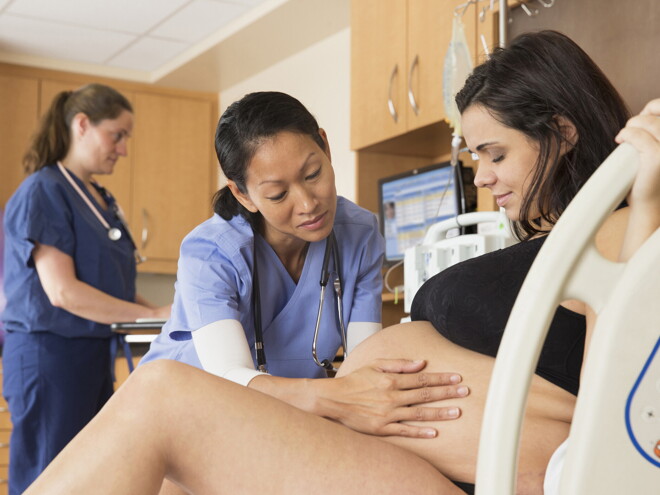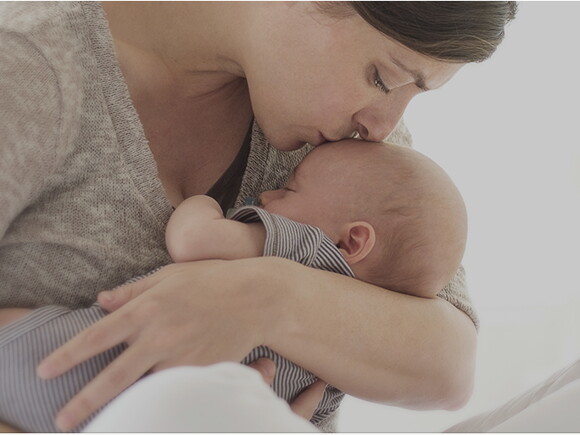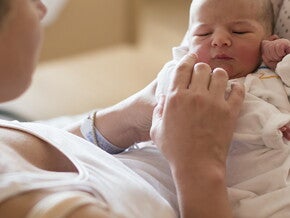
C-sections: Everything You Need to Know and Consider
Get to know more about the c-sections, how they are done, the risk and how to take care of yourself after the procedure. Click here and learn everything about it.
In the realm of childbirth, caesarean sections, commonly known as C-sections, stand as a significant and often-discussed aspect of the birthing process. As we delve into this topic, it's essential to approach it with an informative and reassuring tone.
While most pregnancies progress smoothly without the need for surgical intervention, C-sections play a crucial role in ensuring the safety of both the mother and the baby in certain situations.
There are various reasons why a healthcare provider may recommend these procedures, ranging from complications during labor to concerns about the well-being of the child.
In Mom&Me, we'll explore the ins and outs of C-sections, from the reasons behind their recommendation to the recovery process and emotional aspects.
What are C-sections?
These are surgical procedures performed to deliver a baby when a vaginal birth may pose risks to the health of the mother or the baby. Unlike natural vaginal births, C-sections involve making incisions in the mother's abdomen and uterus to safely bring the baby into the world.
It can be planned (elective) or become necessary during labor due to unexpected complications.
During a C-section, the mother is typically administered regional anesthesia, such as an epidural or spinal block, to numb the lower part of her body while remaining conscious. The surgeon then makes an incision in the abdominal wall and the uterus to carefully deliver the newborn. The incisions are meticulously closed with stitches or staples.
Why are C-sections Necessary?
The decision to opt for a C-section is typically made by healthcare professionals based on careful consideration of various factors that may pose risks to the well-being of the mother or the baby.
One common reason for it is the occurrence of complications during the labor process. If progress stalls, or if there are signs of distress in the baby, the procedure may be recommended to ensure a swift and safe delivery.
When a newborn is positioned feet or buttocks first instead of headfirst in the birth canal, it is known as a breech presentation. In such cases, it is often recommended to reduce the risks associated with delivering a breech baby vaginally.
In pregnancies involving twins, triplets, or more, a C-section may be planned to manage the unique challenges associated with delivering multiple babies. The position of each baby and the potential for complications guide the decision.
Complications related to the placenta, such as placenta previa or placental abruption, may necessitate the procedure. These conditions can pose significant risks to both the mother and the baby during a vaginal delivery.
While it is a medical intervention, it is aimed at ensuring the safety and well-being of both the mother and the newborn, emphasizing the importance of individualized care and informed decision-making.

Types of C-sections
C-sections are classified into two main types: scheduled and emergency. Each one serves a distinct purpose, reflecting the individualized nature of childbirth and the need for flexibility in responding to unexpected situations.
Scheduled C-sections
This type of C-section is typically recommended when specific factors or conditions make a vaginal delivery less favorable or riskier. Common reasons for scheduling it include multiple pregnancies breech presentation, or maternal health issues that may pose challenges during labor.
It may provide a sense of predictability for both the medical team and the parents. The date and time are usually determined during prenatal care, and the procedure is performed before the onset of labor.
This approach allows for a controlled and organized environment, making it easier to manage potential complications and ensuring the availability of the necessary medical personnel.
Emergency C-sections
Emergency C-sections, on the other hand, are unplanned and typically arise during labor or delivery due to unforeseen complications. These situations require swift decision-making by healthcare professionals to safeguard the well-being of both patients.
Common reasons include fetal distress, stalled labor, or sudden changes in the mother's health.
In an emergency, the need for intervention becomes apparent during labor, prompting immediate action. The decision may be influenced by factors such as the baby's heart rate, issues with the placenta, or complications that arise unexpectedly.
Despite the urgency, healthcare providers prioritize the safety of both the mother and her child, ensuring that the procedure is conducted with precision and care.
Both types of C-sections aim to prioritize the health and well-being of both the mother and the newborn, emphasizing the personalized and dynamic nature of obstetric care.
What are the Risks of C-sections?
While C-sections are commonly performed and often necessary for medical reasons, it's essential to recognize that, like any surgical procedure, they come with inherent risks.
- Any surgical procedure carries the risk of infection. In the case of a C-section, there is a potential for infection at the incision site or within the pelvic organs. Careful hygiene practices and postoperative care are implemented to minimize this risk.
- It may lead to increased blood loss compared to vaginal births. While medical teams take measures to control bleeding during and after the procedure, excessive blood loss can have implications for the mother's health.
- During a C-section, there is a slight risk of unintentional injury to surrounding structures, such as blood vessels, bladder, or bowel. These injuries are typically addressed promptly by the surgical team, but in some cases, additional procedures may be required.
- Recovery typically takes longer than recovery from a vaginal birth. Mothers may experience discomfort, pain, and limitations in mobility during the initial post-surgery weeks.
- Babies born via this procedure may be at a slightly increased risk of respiratory issues, including transient tachypnea (rapid breathing) and respiratory distress syndrome. This is because the squeezing motion during vaginal delivery helps clear fluid from the child's lungs, which may be less pronounced in a surgical procedure.
Expectant mothers must engage in open and informed discussions with their healthcare providers to weigh the potential risks and benefits based on their unique circumstances.

How is the Recovery from C-sections?
While every woman's experience is unique, understanding the general aspects of C-section recovery can help mothers prepare for the postoperative period.
After the surgery, mothers typically spend a few days in the hospital for monitoring and initial recovery. During this time, healthcare providers assess the incision site, manage pain, and ensure that both the mother and the baby are in stable condition. Early ambulation, breathing exercises, and pain management strategies are introduced to facilitate recovery.
These incisions are usually closed with stitches or staples that will need to be removed within the first post-surgery weeks. Proper care of the incision site is crucial to prevent infection. Keeping it clean and dry, avoiding strenuous activities, and following healthcare provider guidelines contribute to optimal healing.
Pain management is a key aspect of C-section recovery. Mothers are prescribed medications to alleviate discomfort, especially during the initial days after the surgery. Balancing the need for relief with considerations for breastfeeding and caring for the newborn is an important aspect of postoperative care.
While gentle movement is encouraged to prevent complications such as blood clots, women recovering from a C-section should avoid heavy lifting and strenuous activities during the early weeks. Gradual reintroduction of physical activity, guided by healthcare provider recommendations, supports a steady recovery.
Recovering involves not just physical healing but also emotional adjustment. Open communication with healthcare providers, support from family and friends, and acknowledging these emotions contribute to a positive emotional recovery.
Mothers who choose to breastfeed may face some initial challenges due to postoperative discomfort and positioning concerns. Lactation consultants and healthcare providers can offer guidance on comfortable breastfeeding positions and address any issues that may arise.
As we've explored the nuances of C-sections, it becomes clear that these procedures, whether scheduled or emergency, come with a set of considerations and complexities.
Understanding the reasons behind them, the potential risks involved, and the recovery journey is fundamental for expectant mothers and their support networks. Informed decision-making, open communication with healthcare providers, and a supportive environment contribute to a positive childbirth experience.

Gain a better understanding of your child's development with the help of our stages
































